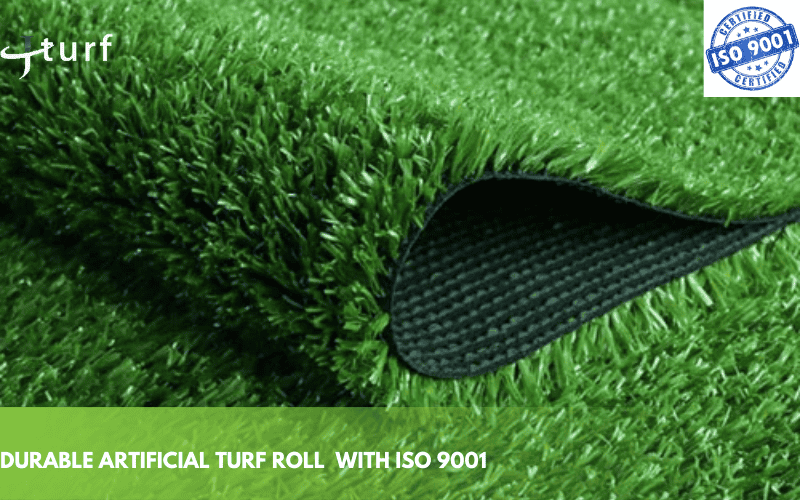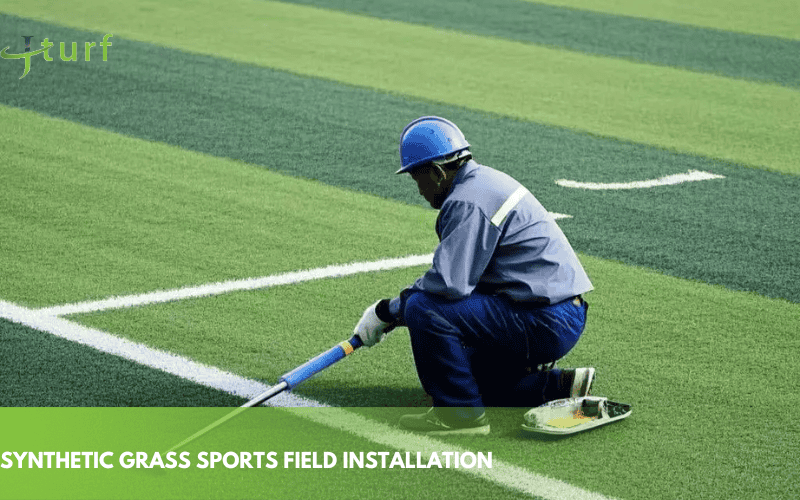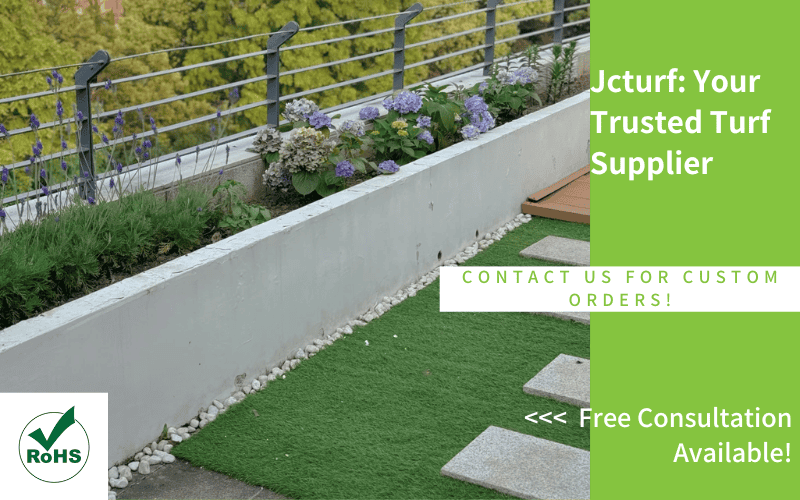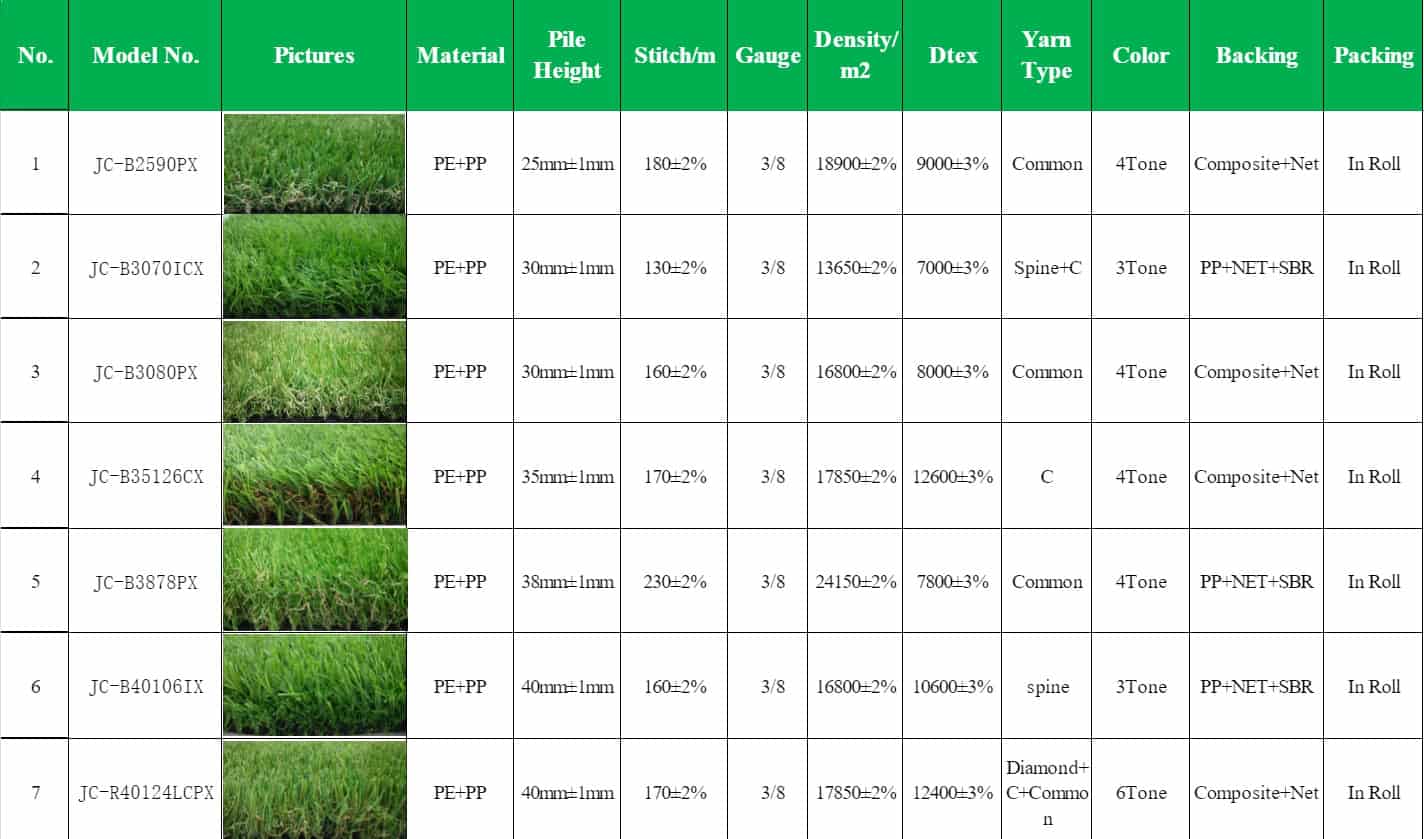If you’re looking for a sustainable and low-maintenance alternative to natural grass, environmentally friendly artificial grass might be the perfect solution. This turf option not only conserves water but also reduces the need for harmful chemicals and saves on maintenance costs.
In this article, we’ll explore the different types of eco-friendly artificial grass, why it’s a great choice for your lawn, and how it can save you money in the long run. We’ll also cover its installation process, performance in various areas, and tips for choosing the best option for your needs.
Is there an environmentally friendly artificial grass?
Yes, there are environmentally friendly artificial grass options. These are made from recycled materials, are recyclable themselves, and avoid harmful chemicals. Some are designed to reduce water usage and promote sustainability.
What is environmentally friendly artificial grass?
Environmentally friendly artificial grass is a sustainable alternative to traditional turf, made with recycled or plant-based materials, requiring no water, pesticides, or fertilizers. It is durable, recyclable, and reduces the overall environmental footprint while mimicking the look of natural grass.
Types of Environmentally Friendly Artificial Grass
There are several types of eco friendly artificial turf designed to minimize environmental impact. These options use renewable, biodegradable, and non-toxic materials, making them a sustainable choice for landscaping.
Plant-Based Artificial Grass: Made with materials like soybean oil or sugarcane, reducing reliance on fossil fuels and improving recyclability.
Turf with Recycled Materials: Produced from recycled plastics or rubber, supporting waste reduction and contributing to the circular economy.
Biodegradable Artificial Grass: Incorporates materials like sugarcane to reduce CO2 emissions and promote natural degradation over time.
Organic Artificial Turf: Made from organic or biobased materials, further reducing environmental impact and reliance on synthetic components.
Non-Infill Turf: Uses sand infill for sports fields, minimizing the need for additional materials and simplifying maintenance.
Low-Maintenance and Durable Turf: Designed to reduce water, fertilizer, and pesticide use, featuring long-lasting fibers that minimize the need for frequent replacements.
Non-Toxic Artificial Grass: Made with non-toxic materials to ensure safety for children and pets. This includes:
- PFAS-Free Artificial Turf: Avoids harmful PFAS chemicals, ensuring safer usage and reducing environmental contamination.
- Non-Plastic Artificial Grass: Eliminates or minimizes plastic content, using alternative materials to reduce plastic pollution.
9 Benefits of Environmentally Friendly Artificial Grass
Choosingeco friendly artificial turf not only enhances the appearance of your lawn but also contributes to sustainability.
- Water Conservation and Cost Savings: Eco-friendly synthetic grass requires no watering, saving both water and money. Artificial turf retains its green hue throughout the year without requiring any upkeep, in stark contrast to natural grass, which necessitates regular watering. This helps reduce water bills, especially in regions with water shortages.
- Reduced Chemical Usage: With eco-friendly artificial grass, you eliminate the need for fertilizers, pesticides, and herbicides. This prevents harmful runoff into the environment, making it a healthier choice for local ecosystems and waterways.
- Carbon Footprint of Artificial Grass: Eco-friendly turf reduces the need for gas-powered lawn care equipment, cutting down on carbon emissions. Choosing sustainable turf made from renewable materials helps lower greenhouse gas emissions compared to traditional lawn care.
- Low Maintenance: Eco-friendly artificial grass requires minimal upkeep. No mowing, weeding, or fertilizing is needed. It only requires occasional cleaning and brushing, saving time, effort, and money on lawn care.
- Pet-Friendly and Safe for Children: Non-toxic artificial grass is safe for both pets and children. It’s durable enough to handle heavy play and pet use, while being easy to clean and maintain, making it ideal for active families.
- Durability and Longevity: Eco-friendly artificial grass is highly durable and resistant to wear, extreme weather, and heavy traffic. It remains in excellent condition for many years, offering a long-lasting, low-maintenance solution.
- Recycled Materials: Numerous environmentally conscious artificial grasses utilize recycled components such as plastic or rubber, which helps decrease landfill waste and lowers the need for new resource extraction.
- Minimized Air and Water Pollution: The use of artificial grass eliminates emissions from lawnmowers and other fuel-powered devices, enhancing air quality and preventing chemicals from seeping into water bodies.
- Sustainability: Opting for artificial grass allows individuals to support sustainable landscaping methods, aiding in the conservation of natural resources for future generations.

Cost of Environmentally Friendly Artificial Grass
The cost of environmentally friendly artificial grass is typically higher than standard options due to the use of sustainable materials like plant-based or recycled components. Prices vary based on the type, quality, and installation, generally ranging from $10 to $30 per square foot, including installation.
Is Environmentally Friendly Artificial Grass Expensive?
Yes, environmentally friendly artificial grass does tend to be more expensive initially than natural grass. However, the higher upfront cost is offset by the long-term savings on water, maintenance, and chemicals. Over the years, you will save money on water bills and lawn care services, making it a cost-effective solution in the long run. Additionally, its durability means you won’t need to replace it as often as natural grass, which is prone to wear and tear.
Eco-Friendly Artificial Grass Installation and Maintenance
Installing eco-friendly artificial grass is a straightforward process that requires proper planning and the right materials. Here’s a guide to help you understand the steps involved in installing eco-friendly turf and keeping it looking great for years to come.
Installation Process: Step-by-Step Guide
The installation of eco-friendly artificial grass typically involves a few essential steps. Here’s an overview:
- Site Preparation: Begin by clearing the area of any existing grass, weeds, or debris, and make sure the ground is even and smooth to create a stable base for the turf.
- Base Layer Installation: Spread a foundational layer of crushed rock or gravel to enhance drainage efficiency and reinforce structural stability for the turf. This layer should be compacted well to prevent settling over time.
- Turf Laying: Once the base is prepared, unroll the eco-friendly artificial grass and place it on the surface. Make sure to lay it flat and align the seams properly.
- Securing the Turf: Secure the edges of the turf using landscape staples or nails to prevent shifting and maintain a neat, fixed position. Stretch the turf tightly to avoid wrinkles or gaps.
- Infill Application: Add infill material such as silica sand or rubber granules to provide weight, improve the turf’s appearance, and help the fibers stand upright. Sweep the infill evenly across the surface.
With these steps, your eco-friendly turf will be ready for use and will stay in place for many years, offering a low-maintenance and sustainable lawn solution.
Maintenance After Installation
Once installed, eco-friendly artificial grass requires minimal maintenance. However, to keep it looking its best, follow these simple tips:
- Brushing: Use a stiff brush to periodically brush the fibers against the grain. This ensures the grass remains upright and maintains a lifelike, natural appearance.
- Cleaning: Maintain the surface by routinely sweeping away debris such as leaves or twigs with a broom or leaf blower.
- Rinsing: Occasionally rinse the turf with water to prevent dust and dirt buildup. This is particularly crucial in high-traffic zones or during dry spells to preserve the lawn’s vibrant, fresh appearance.
Does Artificial Grass Mold?
- Yes, artificial grass can develop mold or mildew if not properly maintained. Without adequate drainage or regular cleaning, moisture can get trapped, creating a breeding ground for mold. To prevent this, ensure proper drainage, rinse the turf regularly to remove moisture and debris, and brush the grass to improve airflow.
With just these basic steps, your eco-friendly artificial grass will stay in excellent condition, saving you time and effort compared to maintaining a traditional lawn.

How Does Environmentally Friendly Artificial Grass Perform in Different Areas?
JCturf’s environmentally friendly artificial grass is designed to perform exceptionally well in a variety of settings, offering durability, low maintenance, and aesthetic appeal. Whether you’re installing it in a residential yard, a commercial space, or a playground, our eco-friendly turf provides a sustainable, long-lasting solution.
Drought-Prone Regions: Artificial grass significantly reduces water consumption, making it ideal for water-scarce areas. It thrives without irrigation, ensuring a consistently green space even where natural grass struggles.
Residential Landscaping: Artificial grass provides a vibrant, year-round green lawn without watering, fertilizing, or frequent mowing. It saves time, resources, and costs, making it perfect for gardens, rooftops, and patios, especially in areas with poor soil or harsh climates.
Public Areas and Parks: In parks and recreational spaces, artificial turf offers a durable, low-maintenance surface that withstands heavy use. It’s particularly useful in areas focused on water conservation or where chemical use is restricted.
Terraces and Patios: Eco-friendly turf enhances terraces and patios with an attractive, comfortable, and low-maintenance green space, making it ideal for urban and compact outdoor areas.
Commercial Spaces: Restaurants, malls, and offices benefit from the low-maintenance and visually appealing nature of artificial grass, which is ideal for high-traffic outdoor areas.
Playgrounds and Sports Fields: JCturf’s artificial grass provides a non-toxic, smooth, and safe surface for children and athletes. Its excellent drainage prevents muddy conditions, ensuring safety and durability under heavy use.
Pet-Friendly Lawns and Dog Parks: Pet-friendly artificial grass is durable, safe, and easy to clean. Its efficient drainage system eliminates odors and keeps the turf fresh, making it ideal for dog parks and pet-friendly lawns.
How to Choose the Best Environmentally Friendly Artificial Grass
When choosing the best environmentally friendly artificial grass, consider the following factors to ensure a sustainable choice:
- Material Sourcing
- Look for turf made from renewable materials like soybean oil, sugarcane, or recycled plastics, which have a lower environmental impact than petroleum-based products.
- Look for turf made from renewable materials like soybean oil, sugarcane, or recycled plastics, which have a lower environmental impact than petroleum-based products.
- Performance and Durability
- Choose grass that is durable and resistant to wear, fading, and UV degradation. Ensure it has good drainage to maintain cleanliness and prevent mold buildup, especially in high-traffic or wet areas.
- Choose grass that is durable and resistant to wear, fading, and UV degradation. Ensure it has good drainage to maintain cleanliness and prevent mold buildup, especially in high-traffic or wet areas.
- Certifications and Standards
- Opt for grass with eco-certifications like USDA BioPreferred or LEED, ensuring the product meets high sustainability standards for material sourcing and environmental impact.
- Opt for grass with eco-certifications like USDA BioPreferred or LEED, ensuring the product meets high sustainability standards for material sourcing and environmental impact.
- Recyclability and End-of-Life Options
- Select turf that is recyclable or biodegradable, ensuring it won’t contribute to landfill waste when it reaches the end of its life.
- Select turf that is recyclable or biodegradable, ensuring it won’t contribute to landfill waste when it reaches the end of its life.
- Non-Toxic and Safe for the Environment
- Ensure the turf is free from harmful chemicals like PVC, lead, and phthalates, and is safe for pets and children.
- Ensure the turf is free from harmful chemicals like PVC, lead, and phthalates, and is safe for pets and children.
By focusing on these factors, you can choose eco-friendly artificial grass that aligns with both sustainability goals and practical needs.
Sustainable Landscaping with the Best Eco-Friendly Artificial Grass Supplier
At JCturf, we are committed to providing the highest quality environmentally friendly artificial grass. As both a supplier and manufacturer, we ensure our products are made with sustainable materials, offering a greener alternative to traditional lawns. Whether you’re looking to reduce water usage, eliminate harmful chemicals, or enhance the aesthetics of your outdoor space, our eco-friendly turf is designed to meet your needs.
Our artificial grass is perfectly suited for diverse applications, including residential lawns, commercial landscapes, playgrounds, and pet-friendly zones. With durability, low maintenance, and a reduced environmental impact, JCturf is the perfect choice for your landscaping projects.


